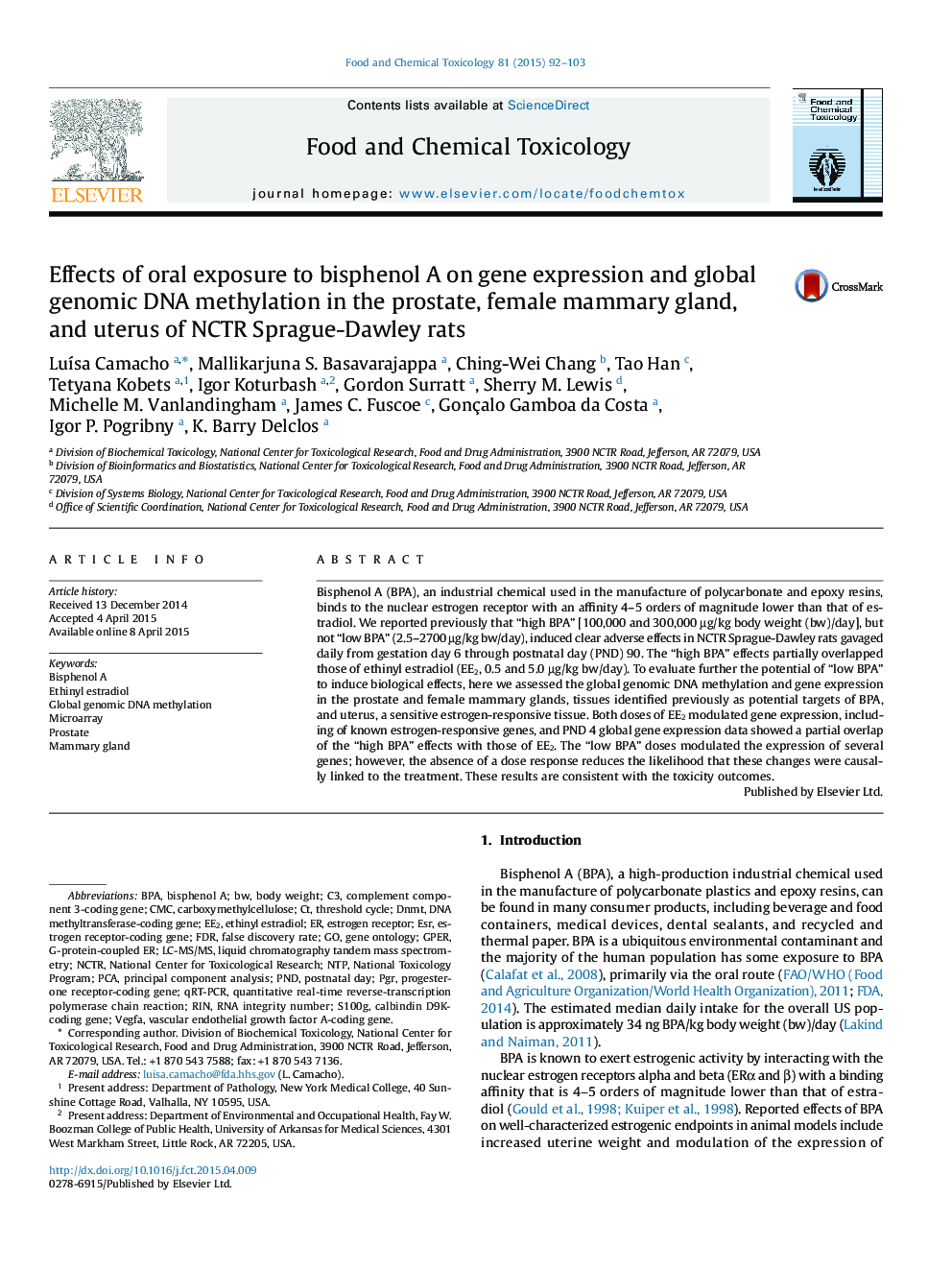| کد مقاله | کد نشریه | سال انتشار | مقاله انگلیسی | نسخه تمام متن |
|---|---|---|---|---|
| 5849761 | 1561763 | 2015 | 12 صفحه PDF | دانلود رایگان |

- The effects of seven “low BPA”, two “high BPA”, and two EE2 doses versus vehicle control were assessed at the molecular level.
- Prostate and mammary glands, tissues previously identified as potential BPA targets, from Sprague-Dawley rats were analyzed.
- Postnatal day 4 microarray data showed gene expression changes induced by “high BPA” overlapped par tially with those of EE2.
- Genes were modulated also in “low BPA” dose range, but lack of dose response reduced likelihood these are treatment-related.
- These results are consistent with the toxicity outcomes reported previously for this animal cohort.
Bisphenol A (BPA), an industrial chemical used in the manufacture of polycarbonate and epoxy resins, binds to the nuclear estrogen receptor with an affinity 4-5 orders of magnitude lower than that of estradiol. We reported previously that “high BPA” [100,000 and 300,000âµg/kg body weight (bw)/day], but not “low BPA” (2.5-2700âµg/kg bw/day), induced clear adverse effects in NCTR Sprague-Dawley rats gavaged daily from gestation day 6 through postnatal day (PND) 90. The “high BPA” effects partially overlapped those of ethinyl estradiol (EE2, 0.5 and 5.0âµg/kg bw/day). To evaluate further the potential of “low BPA” to induce biological effects, here we assessed the global genomic DNA methylation and gene expression in the prostate and female mammary glands, tissues identified previously as potential targets of BPA, and uterus, a sensitive estrogen-responsive tissue. Both doses of EE2 modulated gene expression, including of known estrogen-responsive genes, and PND 4 global gene expression data showed a partial overlap of the “high BPA” effects with those of EE2. The “low BPA” doses modulated the expression of several genes; however, the absence of a dose response reduces the likelihood that these changes were causally linked to the treatment. These results are consistent with the toxicity outcomes.
Journal: Food and Chemical Toxicology - Volume 81, July 2015, Pages 92-103